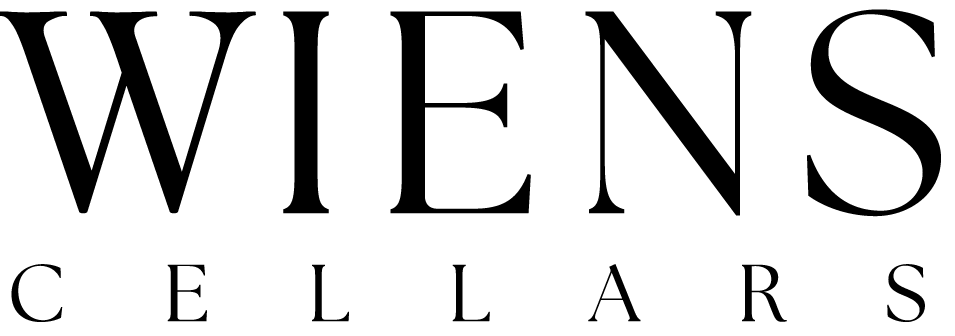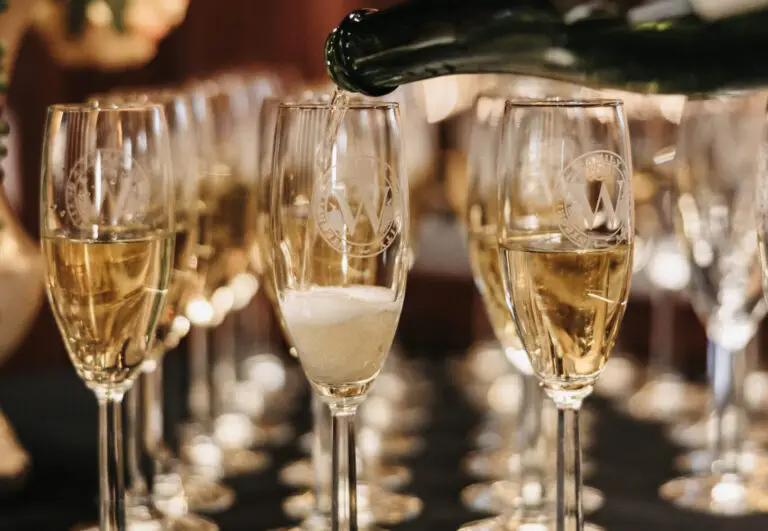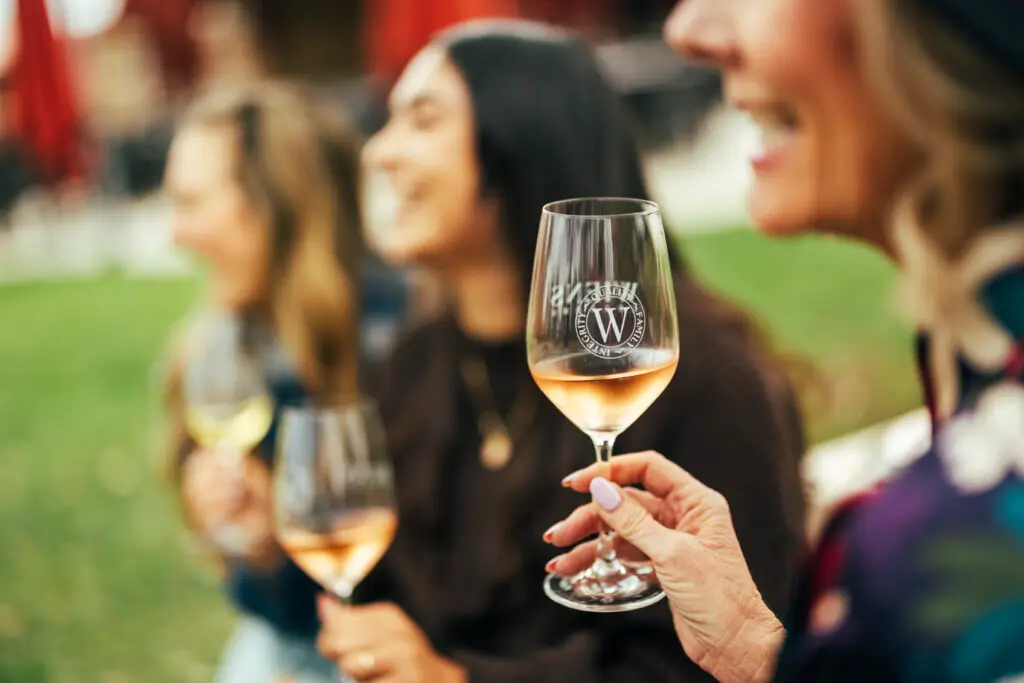The world of sparkling wine is as effervescent and varied as the bubbles in your glass. Beyond the renowned hills of Champagne, a multitude of regions across the globe are crafting exceptional sparkling wines, each with its unique character and charm. This exploration into sparkling wine production unveils the intricate art and science behind these celebratory beverages, highlighting the global diversity that extends far beyond Champagne’s storied vineyards.
The Basics of Sparkling Wine Production
Sparkling wine production is a meticulous process that requires precision, patience, and expertise. The primary methods of producing sparkling wine – the Traditional Method (Méthode Champenoise) and the Charmat Method (Tank Fermentation) – are the cornerstones of sparkling wine production. Each stage of the process, from primary fermentation to bottling, plays a crucial role in determining the final product’s quality, character, and effervescence.
Traditional Method (Méthode Champenoise): A Time-Honored Technique
The Traditional Method, heralded for producing some of the world’s most prestigious sparkling wines, including Champagne, begins with the creation of a still base wine. This wine undergoes a primary fermentation, where yeasts convert the grape sugars into alcohol, creating a dry wine without any effervescence. The magic begins with the addition of a mixture known as ‘liqueur de tirage’, a blend of sugar and yeast, to the base wine. This concoction is then bottled and sealed with a temporary cap for the second fermentation. Inside the sealed bottle, the yeast ferments the added sugar, producing alcohol and carbon dioxide, which, with nowhere to escape, dissolves into the wine, creating bubbles.
This method demands patience, as the wine must age on the yeast lees for a minimum of 15 months for non-vintage wines and three years for vintage, according to Champagne regulations, with many producers extending this period much longer to develop deeper complexity and finer bubbles. After aging, the sediment from the dead yeast cells is removed through a process called ‘riddling’, and the wine is topped off with ‘dosage’, a mixture that can adjust the sweetness level of the final product, before being sealed with its final cork and cage.
Charmat Method (Tank Fermentation): A Modern Approach
In contrast, the Charmat Method, widely used for Prosecco and other fresh, fruit-forward sparkling wines, carries out the second fermentation in large, pressurized stainless steel tanks rather than individual bottles. This technique allows for quicker production times and preserves the wine’s youthful, fruity characteristics. The base wine, mixed with the liqueur de tirage, is transferred to the tanks where the second fermentation occurs. The pressurized environment of the tank traps the carbon dioxide, integrating it into the wine.
Once the desired levels of carbonation are achieved, the wine is cooled, and the yeast sediment is filtered out, maintaining the wine’s clarity. The final product is then transferred to bottles under pressure to maintain the captured effervescence. This method’s efficiency and scalability make it an attractive option for producing sparkling wines at a more accessible price point, without sacrificing quality.
Other Sparkling Wine Production Methods
Beyond these two main methods, alternative techniques such as the Ancestral Method and the Transfer Method offer additional pathways to effervescence. The Ancestral Method, one of the oldest techniques, allows the initial fermentation to pause during colder months and resume naturally in the bottle with the arrival of spring, without the addition of extra yeasts or sugars. The Transfer Method, meanwhile, involves moving wine from individual bottles to a pressurized tank after fermentation, where it is filtered and rebottled. These methods contribute unique characteristics to the sparkling wines they produce, from rustic complexity to refined elegance.
The selection of grape varieties for sparkling wine production is as much an art as it is a science, offering a fascinating insight into the winemaker’s palette. Beyond the renowned trio of Chardonnay, Pinot Noir, and Pinot Meunier, which are revered for their contribution to the world of Champagne and other traditional sparkling wines, there lies a spectrum of grape varieties that bring their own unique character to the effervescent world of sparkling wines.
Diversity Beyond the Classics
The Glera grape, the cornerstone of Italy’s beloved Prosecco, epitomizes the role of specific grape varieties in defining regional sparkling wine styles. Glera’s light, fruity, and floral profile is ideally suited to the Charmat method, yielding a wine that is as approachable as it is refreshing. Meanwhile, Spain’s Cava often incorporates Macabeo, Parellada, and Xarel-lo, a trio that lends Cava its distinctive crispness and depth, capable of aging gracefully.
In the Loire Valley, Chenin Blanc is the star, utilized in the production of Crémant de Loire. Its natural acidity and versatility allow it to express a range of styles from dry and minerally to rich and honeyed, all while maintaining the characteristic sparkle. Similarly, the use of Riesling in Germany’s Sekt showcases how well this aromatic grape translates its varietal purity into a sparkling format, offering a vibrant acidity and a nuanced bouquet that is distinctly German.
Diving Deeper: The Allure of Lesser-Known Sparkling Wine Varieties
While the world of sparkling wine may be dominated by household names like Chardonnay and Pinot Noir, the adventure doesn’t end there. The true connoisseur knows that the path less traveled often leads to the most exquisite discoveries. Winemakers worldwide are embracing a variety of lesser-known grapes, each bringing its own unique story and flavor profile to the effervescent experience. Here are a few standout examples that illustrate the rich diversity awaiting exploration:
- Trepat (Catalonia, Spain): Primarily found in Catalonia, this red grape variety is a key component in the production of Rosé Cava. Trepat produces sparkling wines with a distinctive light body, fresh acidity, and aromatic notes of red berries and floral undertones, offering a vibrant alternative to the more traditional sparkling wine profiles.
- Saperavi (Georgia): Georgia’s indigenous Saperavi grape, known for its deep color and robust tannins, is making waves in the sparkling wine scene. Utilized in both traditional Georgian qvevri (clay vessel) winemaking and modern methods, Saperavi sparkling wines are characterized by their dark, intense color, and complex flavors, blending dark fruits with a refreshing acidity.
- Arbane (Champagne, France): Once on the verge of obscurity, Arbane is experiencing a renaissance among Champagne producers looking to diversify their offerings. This heritage variety contributes high acidity and floral aromatics to the blend, creating sparkling wines that are both delicate and distinctive, with the potential for excellent aging.
- Petit Meslier (Champagne, France): Another rare gem from Champagne, Petit Meslier offers winemakers an alternative avenue for crafting unique sparkling wines. Known for its sharp acidity and subtle green apple and citrus notes, it adds complexity and freshness to the traditional Champagne blend, appealing to those seeking something out of the ordinary.
- Pinot Blanc (Champagne, France and Beyond): While not as obscure as some of the others on this list, Pinot Blanc’s role in sparkling wine production, especially outside of Alsace, is often overlooked. In Champagne and other regions, Pinot Blanc is valued for its versatility, producing sparkling wines that range from elegantly crisp to richly textured, often with a fruit-forward profile.
The burgeoning interest in these and other lesser-known varieties signals a broader trend towards experimentation and diversity in the sparkling wine industry. By stepping off the beaten path, winemakers are not only preserving the heritage and biodiversity of the wine world but also providing enthusiasts with an ever-expanding universe of flavors and styles to discover and enjoy. As this movement gains momentum, it’s clear that the future of sparkling wine is as bright and varied as the bubbles in our glasses.
The Crucial Influence of Terroir
The concept of terroir plays an indispensable role in the expression of these diverse grape varieties. The same grape can exhibit markedly different characteristics depending on where it is grown. The mineral-rich soils and cool climate of Champagne impart a finesse and complexity to its sparkling wines that is difficult to replicate elsewhere. Meanwhile, the warmer, sunnier climates of regions like New Mexico can produce sparkling wines with bolder fruit flavors and a more generous mouthfeel.
England’s recent acclaim in the sparkling wine world underscores the significance of terroir. The country’s chalky soils, akin to those of Champagne, and its cool climate have proven ideal for growing Chardonnay and Pinot Noir, resulting in sparkling wines that are gaining international recognition for their quality and distinctive English character.
The interplay between grape variety and terroir is a testament to the diversity and dynamism of the sparkling wine industry. It highlights the endless possibilities for innovation and discovery within this effervescent world. As winemakers continue to experiment with different grape varieties and embrace the unique qualities of their terroirs, the future of sparkling wine looks brighter and more diverse than ever, promising a wealth of new experiences for wine enthusiasts around the globe.
Tasting and Evaluating Sparkling Wines
Evaluating sparkling wines involves paying attention to the wine’s appearance, aroma, and palate. Key characteristics to look for include the size and persistence of bubbles, the balance of acidity and sweetness, and the complexity of flavors. Tasting allows enthusiasts to appreciate the wide diversity of styles, from the crisp and mineral-driven to the rich and toasty.
Global Sparkling Wine Regions
The global landscape of sparkling wine regions is as dynamic as it is diverse. From the classic regions of Champagne and Prosecco to the emerging vineyards in England, Brazil, and beyond, each area brings its unique contribution to the world of sparkling wine. These regions not only add to the rich tapestry of sparkling wine production but also invite wine lovers to explore and discover new favorites.
The art and science of sparkling wine production are a testament to the creativity and innovation of winemakers worldwide. As we delve into the vast world of sparkling wines, we uncover a spectrum of flavors, traditions, and techniques that challenge and delight our palates. The journey of discovery in sparkling wine is endless, offering endless opportunities to explore, taste, and celebrate the diversity of this beloved beverage. Whether you’re toasting a special occasion or simply enjoying a casual brunch, the world of sparkling wines offers a perfect bubbly match for every moment.




